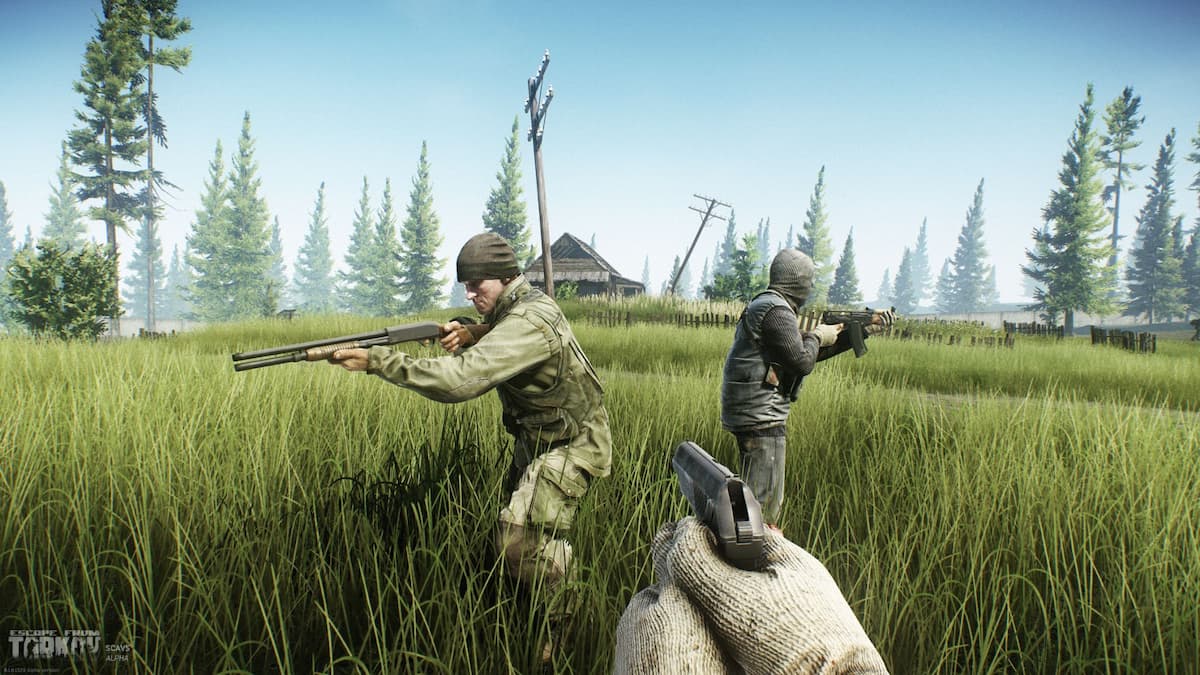The last time I talked about a game taking place during the Cold War, it was under rather unfortunate circumstances. That release, the abysmal Alekhine’s Gun, wasted its excellent setting on a borderline unplayable game. A putrid experience couldn’t change my mind on how the clash between the USA and USSR could make for an interesting tale, though. The arrival of CreativeForge Games’ Phantom Doctrine only helps prove that point, as it’s frosty setting lends itself well to the tactical strategy release.
Rather than focus on the larger scale conflict between the two nations, Phantom Doctrine has you working in the shadows. Giving you the option to experience the story from either the perspective of an ex-CIA or ex-KGB agent, you are the leader of an organization only known as The Cabal. Playing both sides of the table, The Cabal is tasked with taking down another shadowy group, The Beholder Initiative. As with all secret organizations, Beholder is working to sow discord in the world, and if you can’t take them down, who knows what chaos they will create. If two campaigns wasn’t already enough, a third one opens up upon successful completion of the other two.
For as twisty and surprising as the story is here, I struggled to truly become invested with it. Both organizations are pretty ill-defined, and the limited amount of character development you get makes it hard to care when someone inevitably gets got. It doesn’t help that the major story beats are typically either told through awkward looking cutscenes or bits of dialogue that pop up while you are focusing on something else. I did enjoy the constant paranoia the game manages to create, though. You can never be entirely sure if one of your agents is playing for the other side, and the ways in which they can reveal themselves can lead to some great, dynamic moments. If only these exciting bits could have been replicated across the entire story.

While the story may have been neglected, perhaps it was due to CreativeForge Games putting in the effort gameplay-wise. Although the comparisons to XCOM have been thrown around, Phantom Doctrine, in my opinion, has more in common with Klei Entertainment’s stellar Invisible, Inc. Combat is one way of handling matters in both titles, but utilizing stealth and espionage is often the smarter play. Most of the missions share this sentiment as well, with sneaking in and out often being the only way to make it out alive.
You are given the tools to successfully infiltrate an enemy hideout, but it will take smarts in order to remain completely invisible. The easiest way to do this is to have one of your agents wear a disguise, as well as have a perk unlocked that makes them undetectable. Said agent will typically be placed within enemy ranks, and can more or less freely investigate. Only by knocking out too any enemies, getting caught stealing something, or getting spotted (assuming your agent is not disguised) will you begin to set off alarms. It’s tough, and the limited amount of space you can see at times is pretty unfair, but it’s certainly doable.
If/when you are spotted, Phantom Doctrine shifts into a more traditional tactical shooter. Each agent is usually given two movement actions and one firing action, which can encompass several different abilities. The biggest difference between this and XCOM, is that Phantom Doctrine does away with the frustrating randomness that permeates Firaxis’ popular franchise. You’ll always be able to see if you can damage a target, with the variance coming with how much damage you ultimately end up doing. Sometimes, the enemy will dodge your attack and only take a slight hit, and other times they’ll be completely waylaid by your shots.

Although I do appreciate the straightforwardness of the combat, it’s definitely the weaker half of on-foot missions. The action itself isn’t terrible, but it’s rarely exciting. My main point of contention here are the other factors at play. To begin with, the line of sight seems ridiculously askew. It’s not unheard of to get potshotted by an enemy from a building away, through two windows and an open door. That’s in addition to the fact that enemies can often see you way before you can see them. Knowing that you’re always at a disadvantage makes these moments a chore to get through. You do get better tools the more you play, such as the ability to set up outside support units, but the combat never really gets better. Either you’re gonna appreciate its steep difficulty, or you’re gonna wish the stealth segments stuck around longer.
There’s more to Phantom Doctrine than just carrying out missions on-foot, though. As the leader of The Cabal, you are also in charge of managing the base of operations. This means you’ll be upgrading your facility, developing new equipment, checking in on injured patients, investigating intelligence briefings, and sending agents out to uncover enemy documents and plans. There’s a lot going on during this portion of the game, and it’s pretty fun getting to micro-manage it all. As you send agents out to uncover leads and recover precious information, you really do begin to feel like the boss of a major spy operation. All of it is crucial, so you’ll need to be smart about what you investigate. I’m also a big fan of using the unlockable MK Ultra facility to either interrogate captured enemies, or weed out turncoats within my own ranks.
Although simple in scope at times, my favorite activity was using the Investigation Board to decipher enemy intelligence. As you send agents out in the field, you’ll often recover helpful bits of documentation. You can then display them on your digital cork-board in order to draw conclusions between your evidence. It’s pretty simple, all things considered, but the mood created by having all of this info laid out and linked together via string was amazing. I felt like a real Carrie Mathison, minus the bipolar disorder.

Managing your shadowy organization is one of Phantom Doctrine’s more interesting aspects, but I wish CreativeForge Games did a better job explaining how most of it works. You are given a very brief and uninformative tutorial when you start, and then you’re quickly thrown into the thick of things. One of the most important parts of the game, the Danger Threshold meter, is barely covered, and if you don’t quickly understand how it works, you’re basically screwed going forward. I get that this was probably done purpose, as running The Cabal shouldn’t be an easy feat. However, it makes the first several hours of the game absolutely brutal to get through. And if you spend too much time trying to get a hand of the game’s many mechanics, you’re just gonna be stuck in an even bigger hole. Theoretically, you could just start over again, but that hardly seems like the ideal solution.
I already mentioned that I wasn’t impressed with the animated cutscenes, but the visuals of Phantom Doctrine don’t get any better. The in-game graphics look rougher than most PlayStation 3 titles, with character models being particularly ugly. I did appreciate the amount of costuming options open to you, though. The levels aren’t that bad, but they are largely unmemorable. They also suffer from being a little too dark and dreary at times. The sound design is significantly better, however. The tense soundtrack does a capable job of backing the action, and the voice acting is solid throughout. I could have done without the recycled lines that agents spout in-game, but they are often so absurd, I couldn’t help but laugh at them.
I’m not sure if I come off as overly critical or not, but I do genuinely like Phantom Doctrine. The setting is excellent, the micromanaging is surprisingly engaging, and when the title focuses on espionage and infiltration, it’s absolutely thrilling. Unfortunately, the cracks begin to show once you are forced to shoot your way out of trouble. The over-the-top line of sight and uninspired gunplay make these moments a slog to play through. If these sections were to just be marginally improved, and if other mechanics were properly explained, CreativeForge Games would have something truly special on their hands. Post-launch support could do wonders here, so let’s hope the developers choose to support the game moving forward.
This review is based off the PlayStation 4 version of the game. A copy was provided by Good Shepherd Entertainment.






